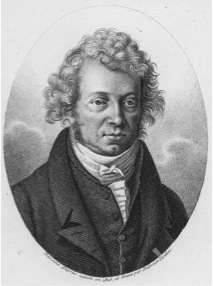Electric current
The directed movement of electric charge carriers, i.e. of electrons which move in a certain direction, is called electric current. Electrons themselves are extremely small elementary particles which all have exactly the same negative charge.
An electric current only flows in a closed current circuit. A closed circuit consists at least of an electric power source and an electric device or component, which are connected by electric conductors (such as electrical wires). These conductors can be metals but also liquids or gases. Note: It is important to check, where electric current could flow! Sometimes an object or a body is included accidentally if it contacts (touches) the electric conductors.
The higher the voltage at the power source, the greater the strength of current (necessary condition: all the components stay the same and temperature remains unchanged). In addition: The stronger the resistance of the electric conductor, the smaller the strength of current if voltage stays the same as before.
If you know about voltage and electric resistance of the electric circuit you can calculate the current strength with the help of this formula:

The current strength

Current strength is a quantity in physics for the number of electrons that flow through a specific cross-sectional area of an electric conductor within one second. (You can imagine this as a gate that counts the electrons which pass a specific spot in the conductor). The current strength is abbreviated by the formula symbol I. The formula symbol I is derived from the word intensity. The purpose is to describe how strong the electric current is. Intensity helps do understand that the amperage is high if an especially great number of electrons flow through the cross-sectional area within a certain period of time.
The current strength is stated in the unit Ampere. It owes its name to the French physicist André-Marie Ampère, who lived from 1775 to 1836 in France. A current strength of one Ampere will be achieved, if 6,24 quintillions (6.240.000.000.000.000.000) of elektrons pass through a conductor cross-section within one second.
The electric current strength is a measure of the amount of charge (Q) which has crossed a sectional area in a certain period of time (t). It is described by the following formula:
![]()
(A quick reminder: Q is the symbol for charge and t thy symbol for time.)
These models of a conductor help you to understand what a high or a low amperage means. The higher the amperage, the more electrons flow through
the conductor within a certain period of time:

Low amperage; a few electrons per period of time:

Note: In a real conductor the electrons don't move that straightforward; they rather move in a zig-zag-course.
Here are some examples for current strenghts from your daily life:
| light bulb | about | 0,4 Ampere |
| torch light | up to | 0,6 Ampere |
| toaster | about | 5,2 Ampere |
| baking oven | up to | 12 Ampere |
| electric locomotive | apbout | 150 Ampere |
| lightning | up to | 1.000.000 Ampere |
